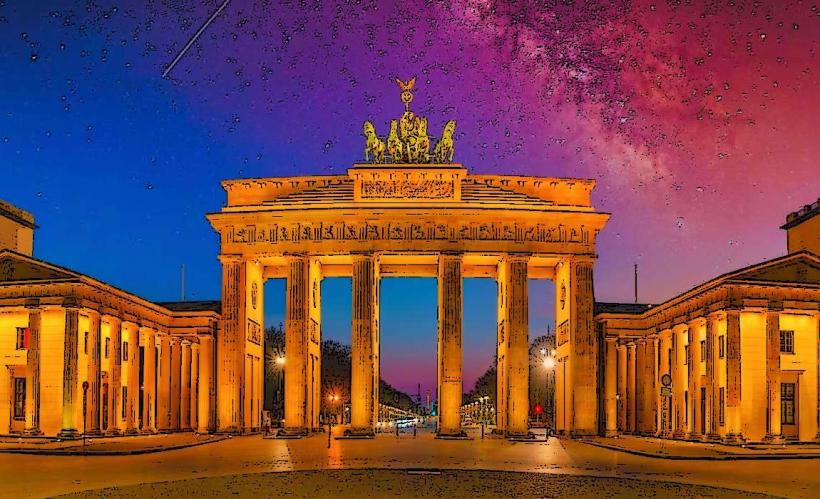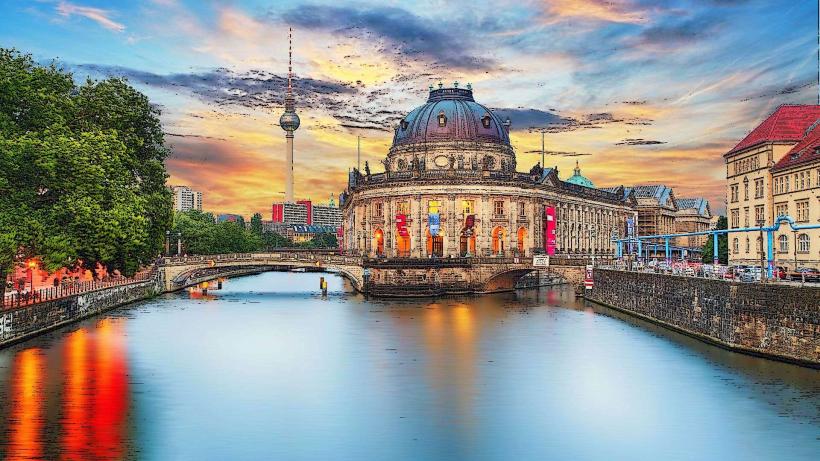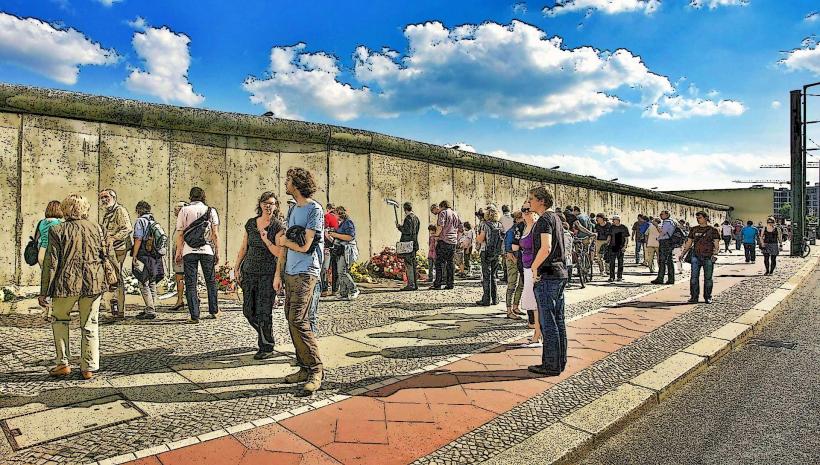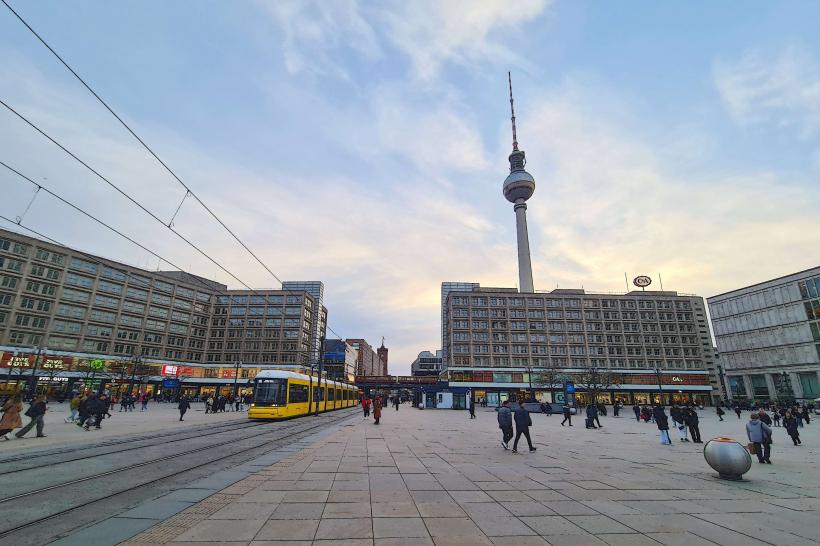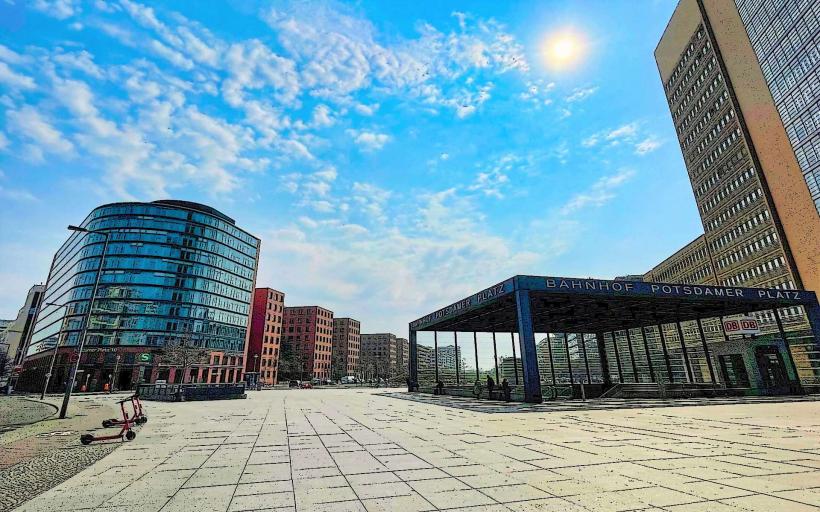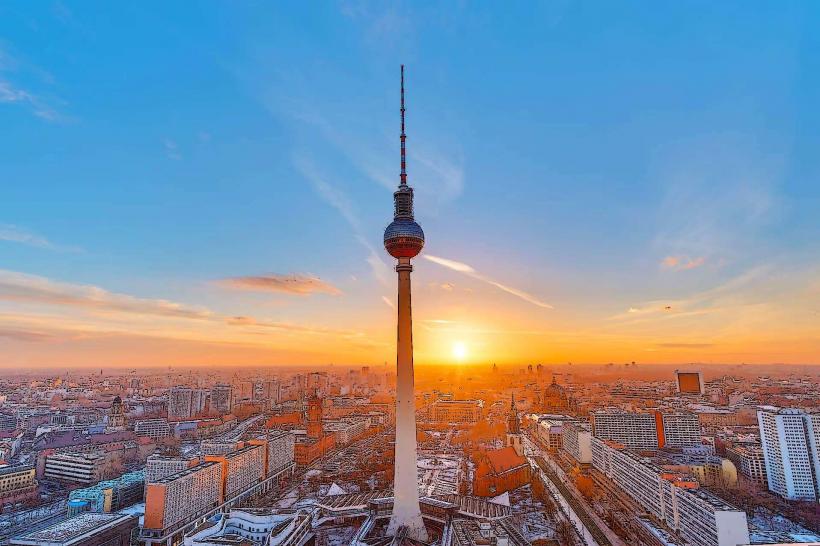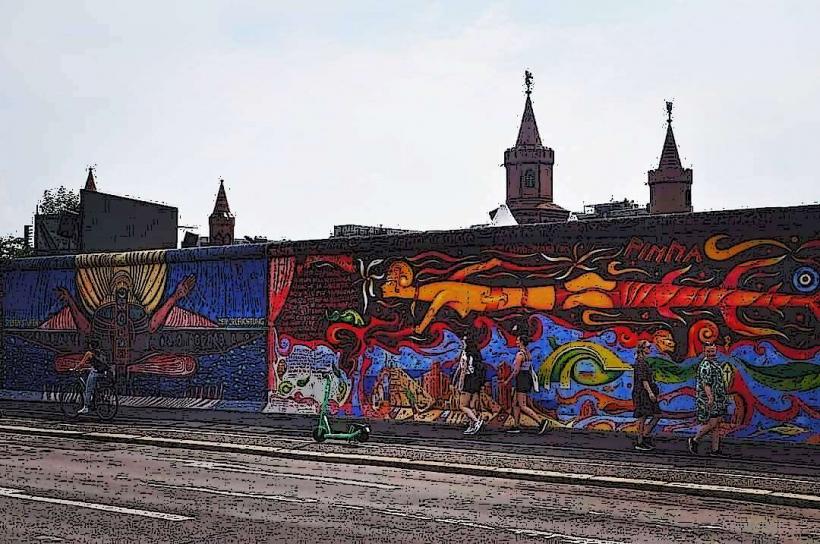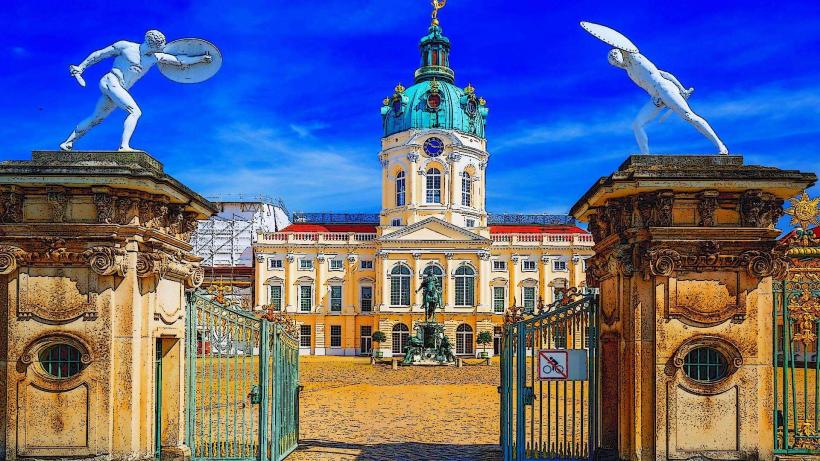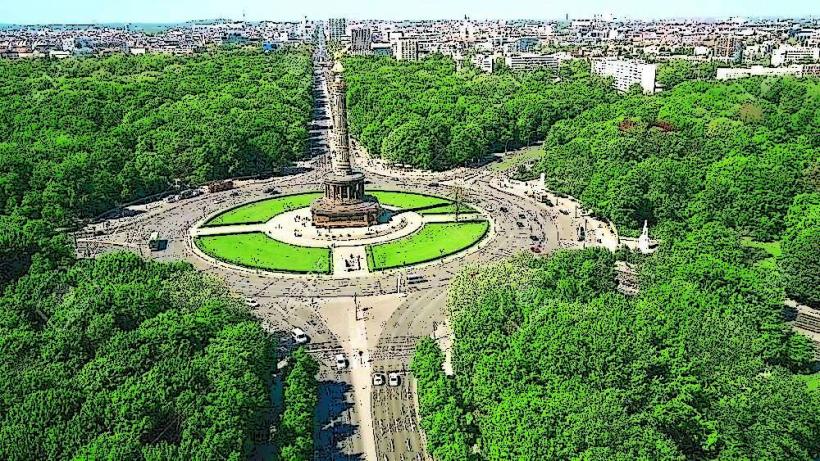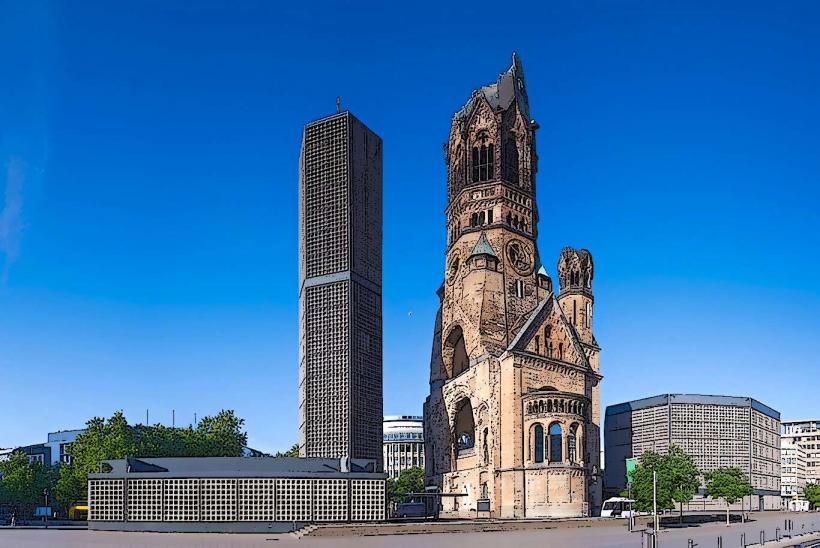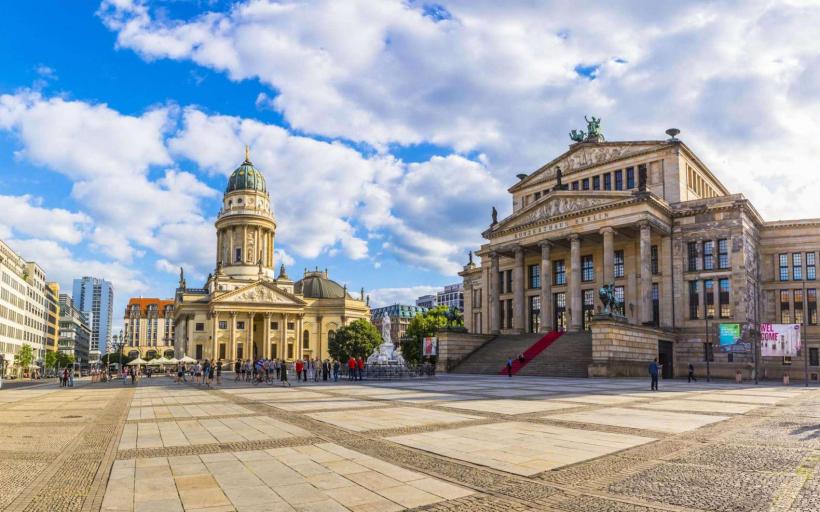Information
Landmark: SiegessauleCity: Berlin
Country: Germany
Continent: Europe
The Siegessäule (Victory Column) is one of the most iconic monuments in Berlin, Germany. Standing proudly in the center of Tiergarten Park, this towering structure is a symbol of Prussian military power and German unity. With its golden statue of the Goddess of Victory on top, the column not only marks significant military victories in Prussian history but also offers stunning views of the city from its observation platform.
1. Historical Background
- Origins and Purpose: The Siegessäule was constructed to commemorate the victories of Prussia in three key wars: the Danish War (1864), the Austro-Prussian War (1866), and the Franco-Prussian War (1870-71). It was erected to celebrate the unification of Germany under Otto von Bismarck and the military prowess of the newly-formed German Empire.
- Design and Architect: The monument was designed by Johann Heinrich Strack, a prominent architect of the time. The column was built between 1864 and 1873, with its final completion marking a symbol of German strength in the 19th century.
- Location Change: Originally, the Siegessäule was located in the Great Prussian Terrace (Großer Stern) near the Reichstag building. However, after World War II, it was relocated to its current spot in Tiergarten to create a more accessible and open location for public viewing.
2. Architecture and Design
- Structure: The column is made of brick and stone, standing at 67 meters (220 feet) in height, including the base and statue. It is made up of several sections, with each layer commemorating a different victory:
- Base: The base of the column consists of a circular platform that houses four smaller reliefs depicting scenes from the three wars, namely the Danish War, Austro-Prussian War, and Franco-Prussian War.
- Column Shaft: The shaft of the column is adorned with golden laurel wreaths and decorative carvings, symbolizing the victories of Prussia and later the German Empire.
- Golden Statue: At the top of the column stands the Golden Victoria (the Goddess of Victory), a 2.5-meter-tall gilded statue made of bronze. She holds a laurel wreath in one hand, symbolizing victory, and a scepter in the other. The statue is gilded with gold leaf and shines brightly against the Berlin sky, making it visible from various parts of the city.
3. Symbolism
- Military Victories: The Siegessäule was initially built to celebrate the military achievements of Prussia. It represents the success in uniting the German states through war and diplomacy. The battles represented on the monument's base highlight the military campaigns that helped shape the modern German Empire.
- Unification of Germany: The Victory Column stands as a lasting symbol of the unification of Germany in 1871 under the leadership of Otto von Bismarck. The column’s central placement in Berlin further emphasizes the unification of the different German-speaking states into a single nation.
- Victories of the German Empire: Although it was originally a symbol of Prussian military power, the column also came to represent the German Empire as a whole, especially after the defeat of Napoleon in 1815, which set the stage for the unification process.
4. Role in Berlin’s History
- World War II Damage: During World War II, the column suffered some damage due to bombing raids, though it was largely undamaged compared to other monuments in Berlin. After the war, the column’s location in West Berlin became an important symbol for the city’s postwar identity, especially during the period of division.
- Cold War Symbolism: The Siegessäule found itself within West Berlin during the Cold War, and although it was closely tied to German militarism, it became a symbol of the free, democratic part of the city during the years of division. As a result, it became part of the broader narrative of Berlin’s resistance to Soviet control in the East.
- Post-Reunification: After the reunification of Germany in 1990, the Siegessäule regained its role as a symbol of unity and national pride, representing not only the military achievements of the past but also the new, reunified German state.
5. Visiting the Siegessäule
- Observation Platform: One of the major attractions of the Siegessäule is the observation platform at the top of the column. Visitors can climb 285 steps to reach the platform, which offers a spectacular panoramic view of Berlin. From the top, you can see many famous landmarks such as the Brandenburg Gate, the Berlin Zoo, and the TV Tower, among others.
- Viewpoints: The monument is located in the middle of Großer Stern (Big Star), a large traffic circle that intersects several major roads. This location provides great visibility and serves as a hub for visitors who can enjoy views of the surrounding park and the Victory Column itself from all angles.
- Exhibition: Inside the column’s base, there are exhibitions that delve into the history of the monument, the wars it commemorates, and the political context of its creation. These displays provide important historical insight into the significance of the column, especially in the context of 19th-century European history.
- Accessibility: The Siegessäule is easily accessible from Tiergarten park, and visitors can reach it by walking, cycling, or public transport. The closest U-Bahn station is Kurfürstendamm, and the S-Bahn station Berlin Hauptbahnhof is also within walking distance.
6. Cultural Significance
- Cultural Landmark: Over time, the Siegessäule has evolved beyond its original military significance and is now an important cultural landmark. The monument has become part of Berlin’s identity, with many people associating it with the city’s rich history, culture, and resilience.
- Public Events and Celebrations: The Siegessäule is often used as a site for public gatherings, festivals, and demonstrations. For example, it is the starting point for Berlin’s Christopher Street Day Parade (CSD), which is one of the largest LGBTQ+ pride events in Germany. The column also hosts New Year’s Eve celebrations and concerts throughout the year.
7. Nearby Landmarks
- Tiergarten: The Victory Column is situated in the Tiergarten, a vast urban park that is also a popular recreational space for Berliners and visitors. The park offers walking trails, scenic lakes, and cultural monuments, including the Berlin Zoo and the Soviet War Memorial.
- Brandenburg Gate: The Siegessäule lies to the west of the Brandenburg Gate, another of Berlin’s most famous landmarks. The proximity of these two monuments reinforces the connection between German history, victory, and unity.
- Reichstag: The Reichstag building, home to the Bundestag (German parliament), is also nearby. It represents the political heart of the country and stands as a counterpoint to the militaristic history represented by the Siegessäule.
8. Conclusion
The Siegessäule (Victory Column) is a significant monument that not only commemorates Germany’s military victories but also symbolizes the complex history of the German state. Standing tall in Berlin’s Tiergarten, it offers a stunning view of the city and provides visitors with a glimpse into the political and military history of Prussia and the German Empire. Today, it continues to be an iconic landmark, representing both the triumphs and the transformations of Berlin throughout the centuries. Whether you visit for its historical importance, the scenic views, or the cultural activities surrounding it, the Siegessäule is a must-see monument for anyone exploring Berlin’s past and present.

